Looking back at the Nokia 9000 Communicator: a phone, a computer, a future for mobile technology for 24 years
- Tram Ho
In 1996, a new thing called the “Internet” was beginning to develop, allowing people to send “e-mail” and explore the “World Wide Web” from their computers. Meanwhile, the ever-evolving GSM network allows millions of people to make and receive calls outside the home and office.
There is one device at the intersection of those two developing trends and one of the first that we can describe today as a smartphone. This is the story of the Nokia 9000 Communicator.

Of course, back then it didn’t have the so-called “smartphone.” Instead, this machine can be described as a “palmtop PC”, a PC in the palm of the hand. However, the size of the machine is quite large – weighing nearly 400g.
At that time it was definitely a PC, running a DOS-based operating system with an Intel 386 chip. This CPU was first introduced in 1985 and brought the x86 architecture into the 32-bit era. . Although it was more than a decade by the time Communicator arrived, it was still quite impressive to see it operating at 24 MHz on the handset.
However, the Nokia 9000 Communicator software does not use 32-bit. PEN / GEOS 3.0 is based on 16-bit GEOS – a primitive operating system with a graphical interface that tried its best to look like Windows 95 when running on a computer.

The 9000 web interface

Fax interface
However, when running on the Nokia 9000 Communicator, it uses a completely different user interface. In no small part is that it is limited by the 640 x 200 px LCD screen, which can only display grayscale.
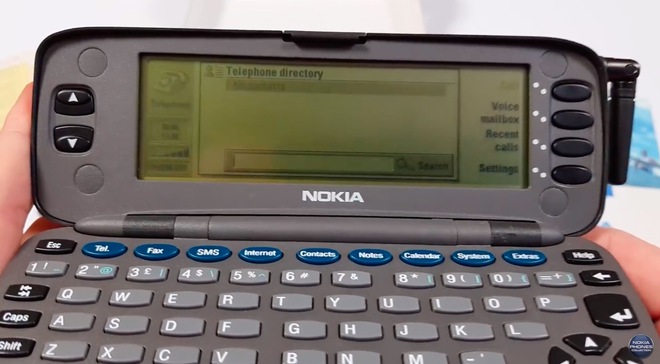
The phone has a laptop-like design with a large screen and QWERTY keyboard on the inside. Outside is a small display and a T9 keypad – this is the phone part of the device. The headset and the headset are located on the “back”, so you need to flip the back to make calls, meaning the screen and keyboard will be facing outward, looking pretty “weird”.
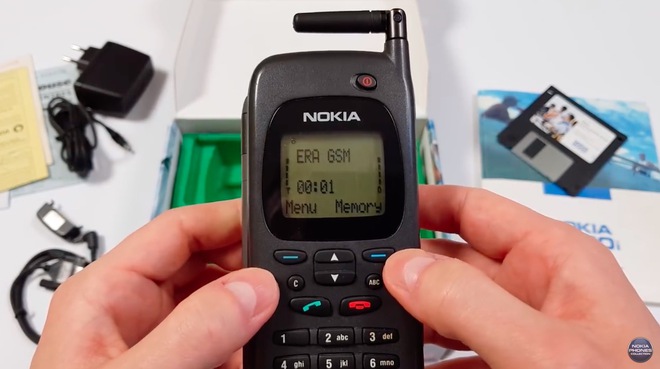
Interestingly, the two halves of the machine are quite separate from each other. You can power on and off the phone part without affecting half “PC”. However, they still have a contact, allowing you to type SMS or edit contact information using the keyboard.
You can also sync your contacts and calendar with the calculator part. This has been done in a complicated way.
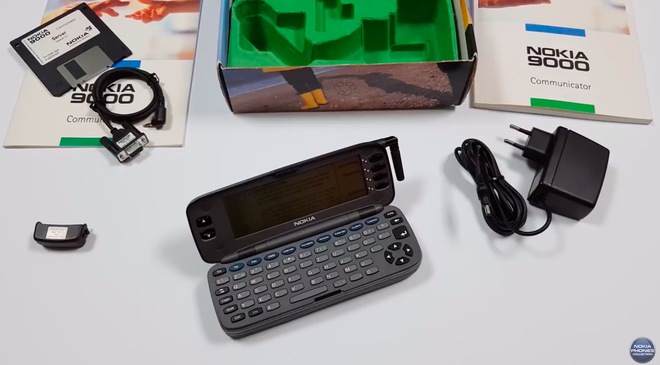
The PC software comes with a 3.5 ”floppy diskette. You must use a sync cable with a D-sub connector on the top of your PC and the proprietary connector on the top of the phone. But you can’t just plug it right into the phone. You also cannot plug the charging cable directly into the machine. Instead, you plugged both cables into the adapter kit, and then plugged the adapter into the phone. It is worth mentioning that this adapter is quite small, with a separate design, so it is quite easy to “disappear”.
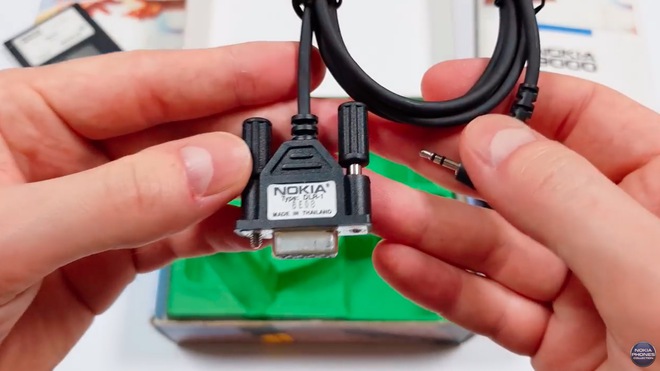
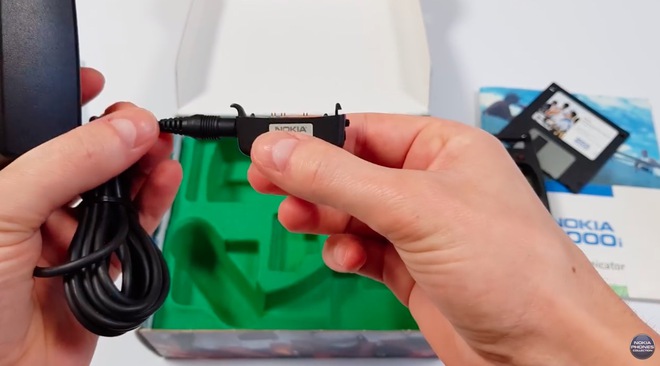
There’s also an Infrared port, which can be used to wirelessly synchronize or print documents. Remember this device appeared before Bluetooth was on the phone, let alone Wi-Fi.
But you don’t need a computer to do many day-to-day tasks, which is at the heart of the Nokia 9000. You can easily reply to emails you receive while away from the office. You can even receive faxes – businesses used a lot in those days.
Internet and fax are transmitted over 9,600 bis per second CSD (Circuit Switched Data) connection very slowly. Receiving a page will take more than 40 seconds. You can also surf the internet primitive thanks to the browser pre-installed, which is also extremely slow.
Unfortunately, GeoWrite, the GEOS document editor, is not available in Communicator. Only a simple note-taking app. That is probably fine, the QWERTY keyboard certainly made text input easier than the T9 phone keyboard at that time.
Nokia 9000 Communicator
A few years later, the Finnish company introduced the much improved Nokia 9110 Communicator. It’s much lighter at “just” 253g, and the external antenna can be folded into the body. Even better, the silly adapter kit has been removed, allowing you to plug the cable directly into the phone. The CPU has been upgraded to a 486 CPU manufactured by AMD, which runs at 33 MHz.
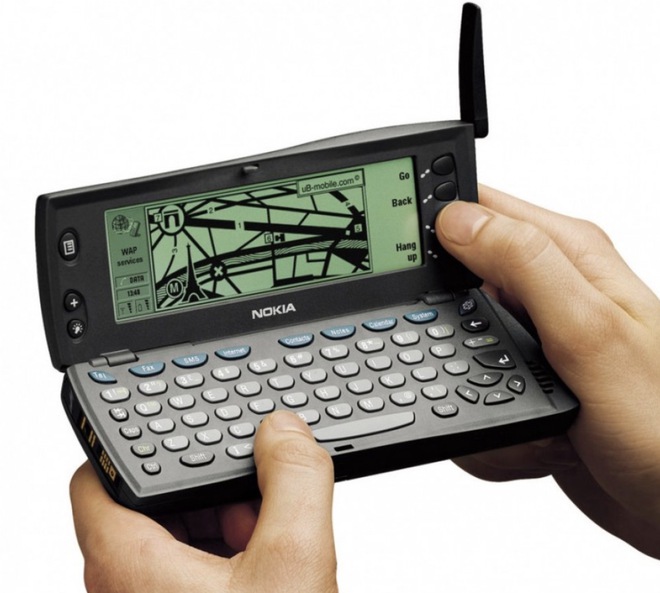
Nokia 9110 Communicator
This model also added an MMC card to expand storage capacity. Both the new version and the original Communicator have a total of 8 MB of internal storage, of which 2 MB is reserved for your data.
The next model, the 9210 Communicator, has moved to Symbian, which is the operating system of choice for the “spiritual successor” of the Communicator, the Nokia E7, but that’s a different story.
Reference: GSMArena, Nokia Phones Collection
Source : Genk
